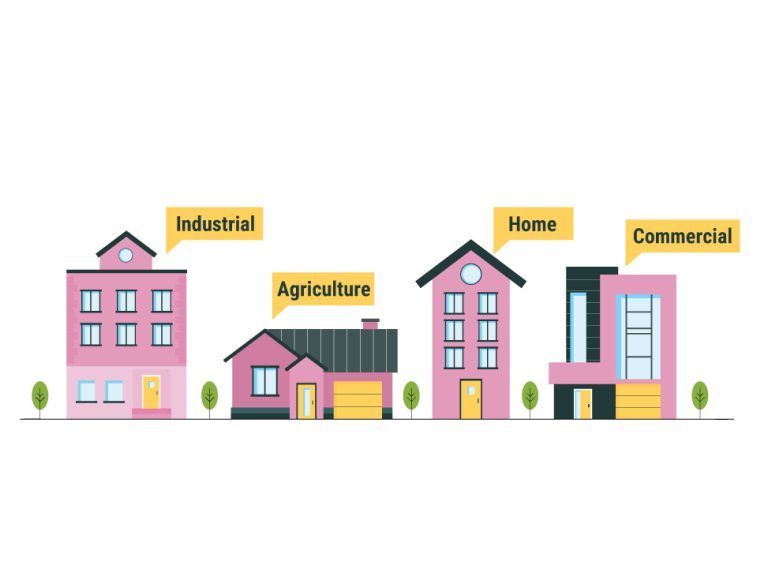Getting home loan is very BASIC now
Get a loan in under 5 mins

Investing in immovable property has always been a popular choice for many, offering both security and potential for appreciation. This blog explores the different types of immovable assets, the legal rights associated with them, and their significance in the investment landscape.
Table of Contents
Immovable property refers to assets that cannot be moved from one place to another. These include land and anything attached to the earth, such as buildings, trees, and permanent structures. Unlike movable property, which can be relocated, immovable assets are fixed in one place.
Understanding the different types of immovable property is crucial for making informed investment decisions. Here is an immovable property list detailing the primary types:
Suggested read: Leasehold Property
Investing in immovable property comes with specific legal rights and obligations. Here are the key legal aspects to consider:
Suggested read: Loan Against Property Without Income Proof
Investment in immovable properties is often seen as a stable and profitable venture. Here are some reasons why investors prefer immovable assets:
SampattiUnderstanding the distinction between movable and immovable property is essential for legal and financial purposes. The legal framework governing these two categories is different, with specific rules for transfer, taxation, and ownership. Let’s delve deeper:
| Aspect | Movable Property | Immovable Property |
| Definition | Assets that can be moved from one place to another. Ex: Vehicles, jewelry, electronics, furniture, etc. | Assets that are permanently attached to one location. Ex: Land, buildings, trees, permanent installations, etc. |
| Legal Framework | Governed by the Transfer of Property Act, 1882. | Governed by the Transfer of Property Act, 1882, and other relevant laws. |
| Transfer Process | Simple, often involves a bill of sale or delivery. | Requires a registered deed and compliance with legal procedures. |
| Registration | Not always required, except for certain high-value items. | Mandatory for all transactions involving transfer of ownership. |
| Taxation | Generally subject to sales tax or VAT. | Subject to property tax, stamp duty, and registration fees. |
| Depreciation | Tends to depreciate over time. | Generally appreciates in value over time. |
| Ownership Evidence | Possession often serves as evidence of ownership. | Requires title deeds, land records, and registration documents. |
| Investment | Less stable, higher risk, and easily liquidated. | More stable, lower risk, and not easily liquidated. |
| Security for Loans | Can be used as collateral but has lower security value. | Commonly used as collateral with high security value. |
| Maintenance | Lower maintenance costs. | Higher maintenance costs. |
| Inheritance | Easily transferable through a will or inheritance laws. | Requires legal procedures for transfer of title and registration. |
| Encumbrances | Less prone to encumbrances. | Subject to mortgages, liens, easements, and other encumbrances. |
| Examples of Legal Disputes | Theft, damage, and misappropriation. | Ownership disputes, encroachments, tenancy issues. |
While investment in immovable properties can be lucrative, it comes with its own set of challenges:
Maintenance Costs: Regular maintenance and repairs can be costly and time-consuming.
Legal Disputes: Ownership disputes, tenancy issues, and encroachments can lead to legal battles.
Market Fluctuations: Although generally stable, the real estate market can be affected by economic downturns and policy changes.
Liquidity Issues: Immovable properties are not as liquid as movable assets, making it difficult to quickly convert them into cash.
Immovable property remains a cornerstone of wealth creation and security for many investors. Understanding the different types of immovable assets, legal rights, and challenges involved is crucial for making informed investment decisions. Whether you are looking to buy, sell, or rent immovable property, being aware of the legal and financial implications can help you navigate the real estate market effectively.
Investing in immovable property offers numerous benefits, from capital appreciation to rental income, making it a valuable addition to any investment portfolio. As with any investment, due diligence and a clear understanding of the legal landscape are essential to maximizing returns and minimizing risks.
Typically, the long-term period for immovable property is considered to be more than 24 months for taxation purposes.
Section 3 of the Transfer of Property Act, 1882, defines “immovable property” and includes land, benefits arising out of land, and things attached to the earth or permanently fastened to anything attached to the earth.
Published on 25th July 2024